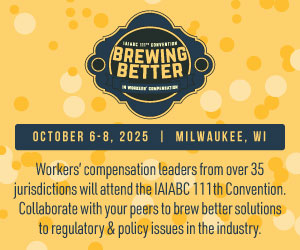Industry Insights
January 15, 2025
Snyder: How Inertia, Delays and Deadlines Affect Your Settlement
- State: California
- - 0 shares
Parties are often surprised by how long it takes to resolve claims.
It doesn’t have to be this way. While some causes are beyond participants’ control, parties can proactively take control of the claim to hasten resolution.

Teddy Snyder
The groundhog effect
Groundhogs can dig long tunnels without coming up to see where they are. Unfortunately, a common litigation technique is similar. Lawyers send out the same written discovery in the same order followed by witness depositions followed by expert depositions. Maybe after all that, they think about settlement.
It makes sense to repeatedly stick your head out of the tunnel to look around and see where you are. You might see a more direct way to get to settlement without continuing to dig. Yes, a way to settlement, because that’s how more than 90% of all claims conclude.
Courts enable delay
The legal system, by its nature, is slow. Courts have limited resources, and scheduling issues can force even simple cases to take years. Discovery disputes, motions and waiting for rulings all contribute to delays. Even when parties are ready to settle, they often wait for a court event, thereby slowing down the process. Sometimes something happens in the interim that damages the prospect of settlement.
The longer a case drags on, the harder it can become to keep up the momentum needed for settlement discussions. On the other hand, mediation can be promptly scheduled as soon as all the necessary participants agree.
The effect of court deadlines
Court deadlines can seem like an obstacle, but they often act as a catalyst for settlement. Deadlines — whether for motions, discovery or trial — create pressure that can push parties to finally engage in serious negotiations. Knowing that a trial date is looming or that the court will impose consequences for missing deadlines often forces parties to weigh the risks of continued litigation more critically. When faced with the prospect of imminent summary judgment or trial, parties are more likely to compromise.
How mediation helps
Mediation can be an invaluable tool to overcome these obstacles. A skilled mediator can help break the inertia by encouraging both sides to step outside their entrenched positions and view the dispute from different angles. Mediation creates a structured environment where parties can focus solely on resolution rather than an adversarial setting.
Mediation defines a window for settlement discussions. It brings the parties together for the express purpose of finally resolving the conflict.
Attorney Teddy Snyder mediates workers' compensation cases throughout California. She can be contacted through snydermediations.com.
Advertisements
Columns
- CAAA: AI Raises Concerns in Workers' Comp System 09/17/25
- Kamin: PEO Registration Bill Likely Headed to Newsom's Desk 09/15/25
- Montgomery: Stop Blaming Doctors for High Costs 09/12/25
- Snyder: Classic Advice Reminders 09/10/25
- Wickert: What Vermont's Landmark Decision on Legal Malpractice Subrogation Means 09/08/25
- Paduda: About Work Comp Medical Costs in Texas 09/03/25
- Kamin: Subpoenaed Records That Can Help With Internal, Psych Claims 08/27/25
- Peabody: Request for Remote Testimony Can Satisfy WCAB Rules With Due Process at Stake 08/25/25
- Montgomery: New DOL Billing Requirements 08/22/25
- CAAA: State Extends Safety Protections to Domestic Service Workers 08/20/25
- Zachry: A Leader in the Fight Against Opioid Abuse 08/18/25
- Kamin: Asking About Liens Against Compensation 08/15/25
- Snyder: Examine Your Process 08/14/25
- Paduda: California Comp Drivers, Part 2 08/13/25
- CAAA: DWC Fumbles UR Rulemaking 08/12/25
- Paduda: California Comp Drivers, Part 1 08/11/25
- Langham: Bias Is Pernicious 08/08/25
- CAAA: Workers Can't Wait for Heat Protection 08/06/25
- Montgomery: State's Mandatory E-Billing Process Arrives 08/04/25
- CAAA: Audit Exposes Deep Failures at Cal/OSHA 07/30/25
Now Trending
- Workers' Compensation News
-
Calif. DA
Announces Fraud…
Posted on Sep 18, 2025
-
Calif. Lawmakers
Pass QME Template…
Posted on Sep 16, 2025Dr. Ron Perelman says: “If you are a QME and taken the test, you know what…”
-
Calif. 2nd DCA
Publishes Decision Allowing
Maintenance Worker to Sue Employer
in…
Posted on Sep 15, 2025
-
Calif. Exclusivity
Bars Pharmacist's…
Posted on Sep 17, 2025
-
Calif. Actuarial
Committee to Explore Cumulative
Trauma…
Posted on Sep 11, 2025
-
Calif. Bills to
Modify SIBTF, Heart Trouble
Presumption Head to…
Posted on Sep 12, 2025
-
Calif. CWCI:
Functional Restoration Program
Claims Almost 60% More…
Posted on Sep 17, 2025
-
Mich. Federal
Court Upholds Dismissal of Injured
Worker's Discrimination…
Posted on Sep 12, 2025
-
N.H. Supreme Court
Upholds Widow's Claim for
Firefighter's Cancer…
Posted on Sep 16, 2025
-
S.C. Denial of
Worker's Occupational Asthma Claim
Not Supported by…
Posted on Sep 18, 2025
Jobs
- Workers Compensation Defense Attorney: Remote or Hybrid
- WC Defense Attorney
- Senior Environmental Health & Safety Specialist - Workers Compensation
- Legal Secretary
- Applicant Attorney
- Senior Attorney/Assistant Attorney 1/2/3 (NY HELPS) WCB Item #8000
- Attorney III - Workers' Compensation Workers' Compensation Jobs
Upcoming Events
Oct 10, 2025
A Night of Glitz & Giving: Kid
Join Kids’ Chance of Illinois for A Night of Glitz & Giving at the Fountain Blue as we come togeth …
Nov 7, 2025
WIMAH 2025 Workers’ Compensati
Join Hawai'i’s premier workers’ comp event for expert insights, top-tier networking, and standout …
Social Media Links
c/o Business Insurance Holdings, Inc.
Greenwich, CT 06836




No Comments
Log in to post a comment